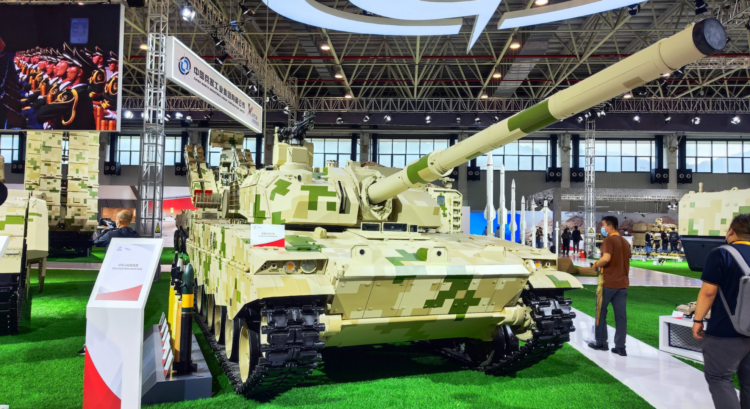Advanced military technologies continue to emerge amid the nearly nine-month-long war between Russia and Ukraine. Undoubtedly, the conflict has prompted superpowers to reassess their defense capabilities and innovate existing as well as develop new weapons in line with the critical lessons seen and learned from the warring nations. China is no exception.
Striving to achieve its military modernization ambitions, Beijing has made impressive progress in upping and revamping its warfare technologies, which caught the international community’s attention. Among the innovations, China appears to be pouring resources into designing autonomous vehicles and remote-controlled weapons as if taking notes on Ukraine’s approach so far in the war against Russia.
With assistance from the West, Ukraine successfully defended its soil against Russian tanks by using unmanned drones, quadcopters, and portable anti-tank missiles that left invaders virtually defenseless. On November 16, Ukraine’s Defense Ministry reported that Russian troops had already lost nearly 2,900 tanks since the war broke out earlier this year.
During this year’s Zhuhai Airshow, China showcased an unmanned version of its VT5 light tank called the VT5-U. This may be the country’s attempt to create an autonomous option for its light tank enabling its forces enhanced protection in addition to better maneuverability.
Also known as the Type 15 tank, this Chinese light tank first appeared in 2010 as a successor to the aging Type 62 used by the People’s Liberation Army (PLA). It is a three-crew vehicle that measures 9.2 meters in length and 3.3 meters in width and weighs around 33 tons. Its armaments include a 105mm rifled gun with a thermal sleeve and fume extractor with a maximum firing range of 3,000 meters. It can also be equipped with secondary armament, which includes a remotely controlled weapon station armed with a 12.7mm machine gun and a 40mm automatic grenade launcher. It officially entered service in 2020 and was deployed at the height of the border dispute with India that summer.
The unmanned version, which resembles the VT5, is a modern combat vehicle outfitted with “several observation systems that can be accessed remotely, including three cameras mounted on the front of the hull and one at the back.” Moreover, the turret has four additional cameras, one installed in each corner. It is undetermined, however, whether the vehicle will have an automatic mode feature.
Meanwhile, some experts noted how the unmanned light tank doesn’t seem to have “sensors and optics essential to control every firing action,” the Eurasian Times reported. Besides protection and maneuverability, China envisions that the VT5-U drastically reduces potential losses for its tank crew on the battlefield.
Upgrades on the VT5 light tank to the VT5-U variant, as shown in the expo, includes a vehicle-mounted Golden Eagle 5A drone that can activate on its own, simultaneously enhancing aerial vision and situational awareness of the crew. The detachable drone can also be used in intelligence, surveillance, and reconnaissance (ISR) missions; support search and rescue operations; and other security surveillance.
Already have an account? Sign In
Two ways to continue to read this article.
Subscribe
$1.99
every 4 weeks
- Unlimited access to all articles
- Support independent journalism
- Ad-free reading experience
Subscribe Now
Recurring Monthly. Cancel Anytime.
The Eurasian Times further cited, according to the information released by Chinese media, that the unmanned variant is also equipped with millimeter-wave radar and a modular drone setup technology that would prevent enemy missiles from “attacking the top.”
Promising Yet Not A Novelty
Unmanned combat vehicles are not new innovations, as the United States has already unveiled and even tested some of these concepts.
For example, in 2020, the US Army proposed the idea of Robotic Combat Vehicles (RCV) that would expand the capabilities of its existing armored vehicles into something that can be wirelessly controlled and fitted with an autonomy mode feature. While the service branch wants to maintain having a human gunner, it is looking deeply into the concept of having a remote-control driver—reducing crew and potential casualties. This next-generation combat vehicle includes three tank variants: light, medium, and heavy, intended to become either scouts or escorts for manned vehicles on the battlefield.
According to Janes, the Army will “not be operating” any medium variants from the RCV program soon, as the service branch intends to “focus first on developing a fleet of smaller unmanned vehicles,” or the RCV-L (light) that weighs around ten tons and is transportable by helicopter.
Doug Bush, the service’s assistant secretary for acquisition, logistics, and technology, told Janes in May this year that the acquisition strategy will focus more on developing the light versions as it tries to learn more about the platform. Nevertheless, Bush noted that the RCV-M (medium) postponement might happen sometime in the future, especially if significant progress is made on experimentation with the light variant.
On a similar concept, the Army announced it had chosen a South Korean unmanned mini-tank last month for “a competitive field test and evaluation program.”
South Korea’s Arion-SMET UGV (Image source: Facebook)
Known as the “Autonomous and Robotic systems for Intelligence Off-road Navigation – Small Multi-purpose Equipment Transport” or simply Arion-SMET, is a two-ton 6×6 vehicle that evolved from a 4×4 multipurpose unmanned ground vehicle (UGV) to support infantry operations. But unlike the RCV tanks, the Arion-SMET will solely focus on support and transport rather than firepower.










